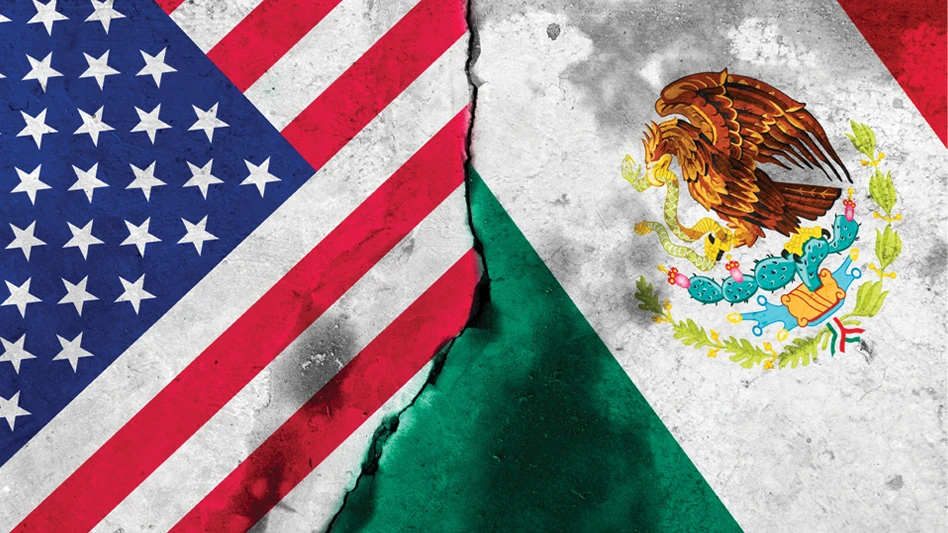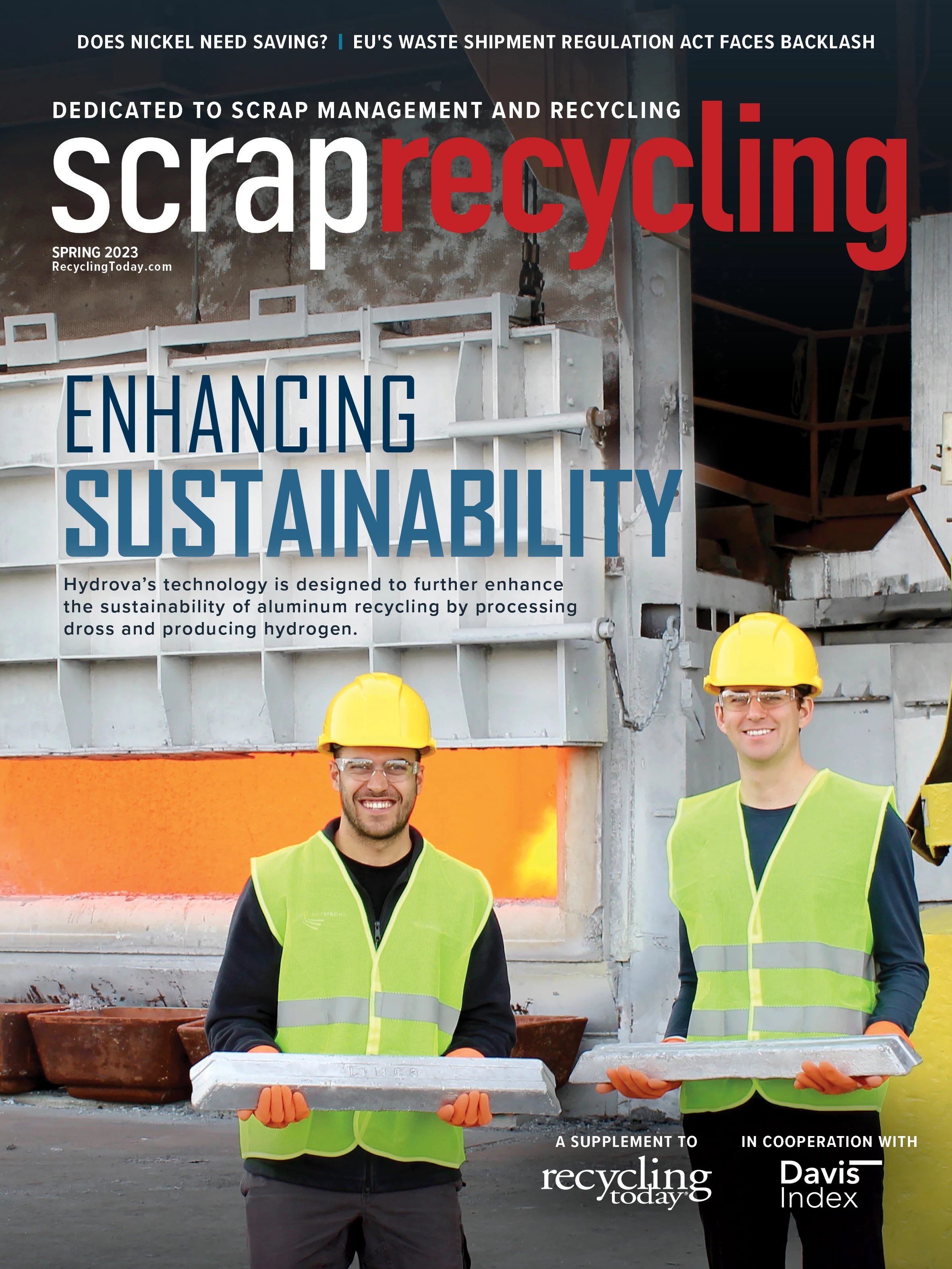

A group of 14 senators addressed President Joe Biden earlier this year following an overwhelming surge of Mexican steel imports into the U.S. from 2019 to 2023. They urged the administration to reinstate the 25 percent tariff on Mexican steel imports Donald Trump’s administration removed in 2019 after reaching a new deal with Mexico that prevented those imports from exceeding historical volumes.
In the senators’ view, the agreement’s threshold had been crossed as imports into the U.S. grew by 73 percent over the past three years, with semifinished steel and long products imports rising by 120 percent and steel conduits growing by 577 percent.
The Mexican Chamber of the Iron and Steel Industry (CANACERO), Mexico City, responded that the U.S. still holds a 1 million metric ton (valued at $1.5 billion) balance over Mexico in the steel trade, and Mexican steel products occupy only 3.3 percent of the U.S. market while U.S. exports to the country sit at 14.6 percent.
In the rebar segment, countries such as Algeria are likely to beat Mexico in exports to the U.S. Speaking at a steel industry event in January, Fernando Villanueva Cuellar, CEO of Houston-based Deacero, noted Mexico was unlikely to take the lead as a rebar exporter to the U.S. in light of dumping cases against the country. Alternately, countries such as Algeria could raise their exports as they did not have such cases pending in the U.S.
Villanueva added that even without Section 232 limitations, Deacero was unable to enter the U.S. market because it was not adequately competitive.
Mexican steel into the U.S.
Shipments of Mexican steel into the U.S. have decreased over the last year. Between March 2022 and February 2023, shipments fell 1 percent to 5.12 million metric tons compared with the same period a year ago. Imports from Mexico were second to Canada’s shipments, which were 6.94 million metric tons.
Mexican steel exports to the U.S. fell by 16 percent to 382,000 metric tons in February from 455,000 metric tons in January. Canada also was the top steel exporter to the U.S. during that period with 538,000 metric tons.
Still, stakeholders in the U.S. steel industry argue the benchmark volume of 2.8 million metric tons of Mexican steel imported into the U.S., which was established between 2015 and 2017, has been surpassed in subsequent years. In 2022, U.S. steel imports from Mexico totaled 4.8 million metric tons, and they reached 4.3 million metric tons in 2021.
Imports of finished steel products from Mexico have affected companies such as California-based steel conduit producer Zekelman Industries. The company closed last year and laid off 145 workers, citing growing imports from Mexico as a factor.
Some market participants say demand for steel and finished steel products in the U.S. has not risen on par with Mexican steel imports to justify the latter. Construction accounts for approximately half of steel consumption in the U.S. and has grown by 20 percent to $1.8 trillion between March 2020 and January 2023, well below the rise in Mexican steel imports.

A bumpy road
Steel production in Mexico is not slowing down. Ternium, for example, is investing $1 billion to expand production at its plant in Pesqueria, Nuevo Leon, by 1.5 million metric tons per year.
Mexico’s steel producers also work to satisfy a robust and growing domestic automotive industry. Light vehicle production in the country increased 6.1 percent to 576,053 units in January and February, up from 543,068 units in 2022.
CANACERO indicates the country’s apparent steel consumption rose to 3 percent in 2022 to 25 million metric tons.
Mexico is expected to consume 18 million metric tons of ferrous scrap by 2025, though the country only has the capacity to produce 14 million metric tons, and electric arc furnace (EAF) steelmaking in Mexico likely will make ferrous scrap even more vital.
This has provided an opportunity for many companies, such as Monterrey, Mexico-based Dimeca, which ordered a shredding plant late last year that will produce 140,000 metric tons of scrap annually. The plant is expected to be commissioned by the end of this year.
Temporary cold patch
Although the value of Mexico’s ferrous scrap imports increased 0.9 percent to $82.4 million in January from $81.6 million the previous year, it is nowhere near the historic highs seen in May 2022, when the value of imports into the country peaked at $188.8 million.
The increase in ferrous scrap imports has been a consistent trend in Mexico since 2020; even with the temporary decline, the value of imports is higher than in prepandemic years. In January 2019, for example, ferrous scrap imports were valued at $33.9 million, reaching a high of $39.3 million in May.
Mexican industrial activity is likely to grow because of the effects of nearshoring, which resulted in $30 billion in investments and 100 companies relocating their operations to Mexico in 2022.
Automobile manufacturers such as BMW’s San Luis Potosi division and Tesla will invest 800 million euros in new operations in Mexico. Therefore, increasing foreign scrap imports into the country is the only way to cover the necessary feedstock that would be required for a potential increase in steel production.
The value of Mexican ferrous scrap exports declined by 29 percent in January to $24.1 million from $35.2 million a year ago, while it fell by 24.1 percent from $32.6 million in December of last year.

Mexican scrap prices
Mexican steel mills’ need for ferrous scrap is reflected in its price growth. The Davis Index for No. 1 busheling has grown by 22 percent from December 2022 through March 2023, reaching $9,698 per metric ton delivered to a Mexico consumer from $7,903 per metric ton.
Shredded ferrous scrap prices rose by 23 percent during the same period to $10,205 per metric ton delivered to a Mexico consumer from $8,278 per metric ton, while No. 1 heavy melting steel increased in value by 29 percent in value from $6,455 metric tons delivered to $8,348 metric tons.
The Mexican peso’s recent rally in value also plays a role in the upward pricing momentum as buyers find imports more attractive than local material.
The future of scrap
Alejandro Wagner, executive director of the Latin American Steel Association, based in Brazil, says Latin America needs to be competitive in the global steelmaking industry by reducing its carbon footprint of its products.
Using EAFs is one of the most viable options to achieve carbon neutrality in the long term, yet its high scrap use will require countries such as Mexico to hold on to its scrap now and in the future.

Explore the Spring 2023 Scrap Recycling Issue
Check out more from this issue and find your next story to read.
Latest from Recycling Today
- BMW Group, Encory launch 'direct recycling’ of batteries
- Loom Carbon, RTI International partner to scale textile recycling technology
- Goodwill Industries of West Michigan, American Glass Mosaics partner to divert glass from landfill
- CARI forms federal advocacy partnership
- Monthly packaging papers shipments down in November
- STEEL Act aims to enhance trade enforcement to prevent dumping of steel in the US
- San Francisco schools introduce compostable lunch trays
- Aduro graduates from Shell GameChanger program





